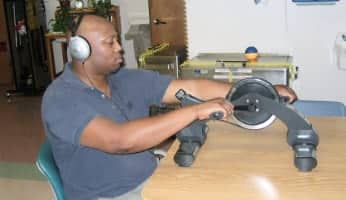Enhancing Communication and Focus: Catrina’s IM Success Story

Home - Testimonials - Pediatric Testimonials - Enhancing Communication and Focus: Catrina’s IM Success Story

Enhancing Communication and Focus: Catrina’s IM Success Story
Catrina is a 10-year-old girl with a diagnosis of ADHD, combined type, and she demonstrated multiple characteristics of Central Auditory Processing Disorder.
Communication Difficulties and School Struggles
Catrina’s mother was concerned with how difficult it was for Catrina to communicate, due to the fact that she omitted salient words during conversation.
She also would frequently become confused in school when auditory information was presented.
For example, Catrina came home from school one day and did not realize she had a test the next day, even though it had been discussed in length during the school day. Obviously, the following day she failed the test.
Several accommodations had been made in the school setting; however, they were of no assistance.
Catrina’s family began to lose faith in the school system.
It was for this reason that Catrina’s parents decided they would home school her for a year in the hope that she would be up to speed by fall 2009.
Seeking Solutions: Discovering Interactive Metronome (IM)
In June 2008, Catrina’s family contacted a clinic regarding information on Interactive Metronome (IM).
The IM program provides a structured, goal-oriented process that challenges the patient to synchronize a range of hand and foot exercises to a precise computer-generated reference tone heard through headphones.
The patient attempts to match the rhythmic beat with repetitive motor actions.
A patented auditory-visual guidance system provides immediate feedback measured in milliseconds, and a score is provided.
Customizing Catrina’s IM Therapy Plan
Because of IM’s flexibility, Catrina’s 15-session plan had several modifications.
She was allowed to complete exercises while sitting in a chair, beanbag or on a balance ball.
Initially, the visual mode was utilized to assist Catrina in her performance; however, this was phased out by the fifth training session in order to improve auditory processing.
Progress and the Impact of ADHD Medication
Catrina made progress but her overall ability to focus, attend and execute fluctuated, dependent upon whether or not she had taken her ADHD medication before attending therapy. IM continued to be used beyond 15 sessions in order to see if she could keep her scores consistent.
Extending Therapy: Achieving Breakthroughs
Extending her sessions was a good idea, as later, in session 21, she began to consistently achieve bursts (i.e., achieving scores within 15 ms of the reference beat) and through different activities, her performance improved.
Combining IM with the Verbalizing and Visualizing Program
Her family and clinician then decided to add Nancy Bell’s Verbalizing and Visualizing program into Catrina’s IM therapy.
Due to the intensity of the V and V program, it was of utmost importance to develop Catrina’s attention, which was where IM came in.
As many clinicians know, IM can be used in conjunction with all types of therapies to improve results.
Notable Improvements: Clearer Communication
Using a combination of the two programs, Catrina’s mother reported that she no longer omitted salient words.
At that point she could complete sentence-by-sentence imaging for 3-4 sentence paragraphs.
She was now capable of getting her message across to whomever she was speaking to!
Final Results: Looking Toward Future Success in School
Catrina has participated in a total of 26 IM sessions and 25 sessions involving the V and V program.
IM assisted in improving Catrina’s overall attention in order to complete the V and V program.
Catrina is now in the later phases of the V and V program, and her mother continues to see growth.
Catrina and her parents are looking forward to success in public school next year!




